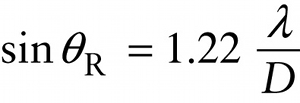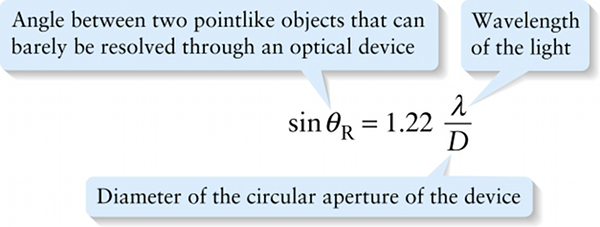Chapter 23. Rayleigh’s criterion for resolvability (23-26)
Question
utkiOWSwRepxxHGs+cQy8wZFjTecnGGsQ/w6WGm0sPjaUJofoSe+o2YSYs7DdIZEkkLCVyz4XOhPIEFKyZ0qLJWB/eMmi4AkMLeSWcOZSNv5tyvOxbDZE/TdWao03MET
Question
qm5Se5Qe4chNzwQQIP4UQm871XLoC18nPn8o4g==
Question
MYJDLiHSofd514rBBGXxjJMtw5LA03NwvXoX9JGMNYQ8HOQQZV/UoHDt8zu7dqszc70tuQ==
Review
The nineteenth-century English physicist John William Strutt, 3rd Baron Rayleigh, proposed the following criterion for resolvability: Two distant, pointlike objects observed through a circular aperture can be resolved when the central maximum of one coincides with the center of the first dark fringe of the other. The angle \(\theta_{\mathrm{R}}\)that separates two point objects that are just barely resolved through a circular aperture, known as the angular resolution of the aperture, is then just the angle given by Equation 23-25:
